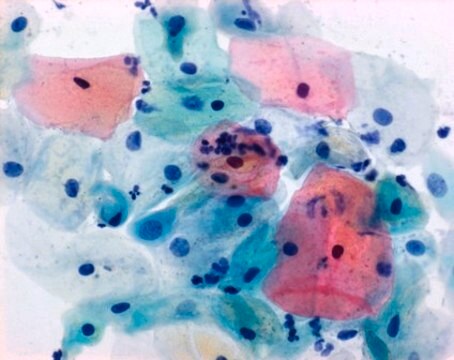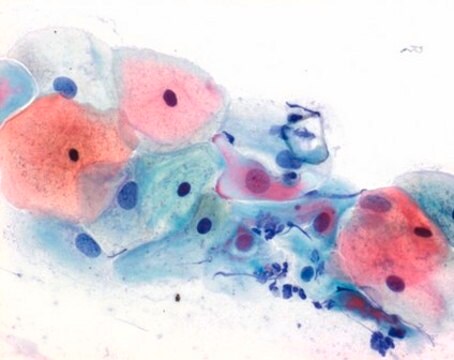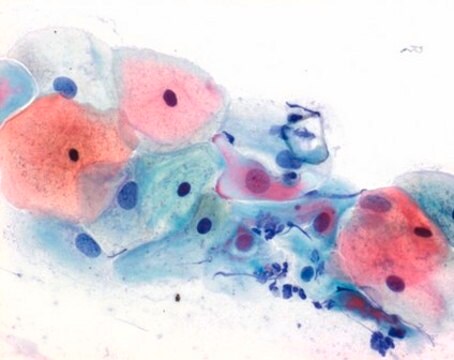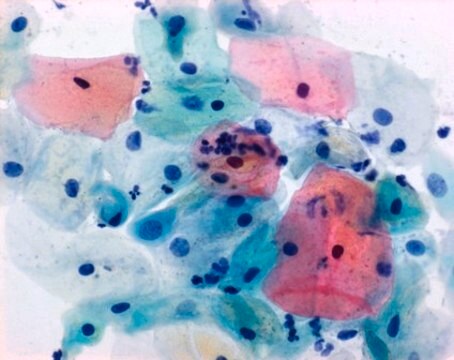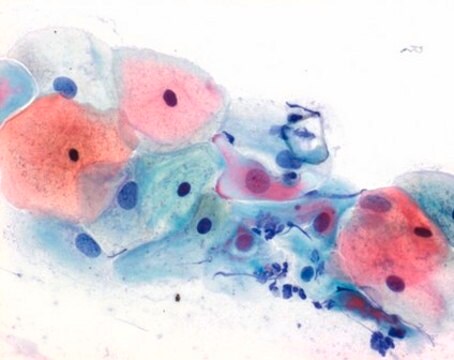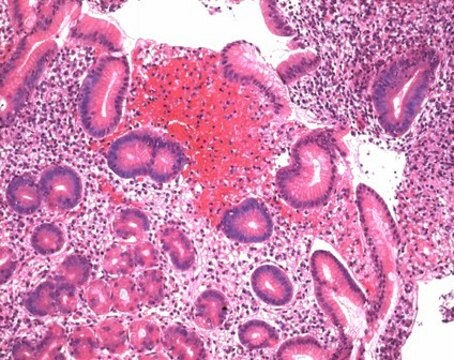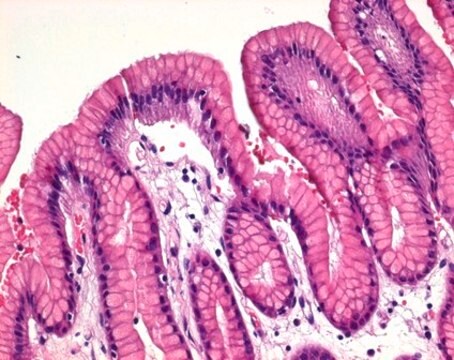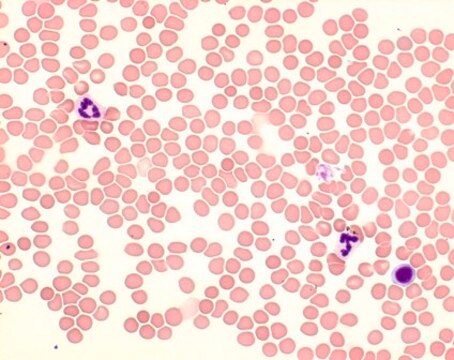1.09271
Papanicolaou′s solution 3a polychromatic solution EA 31
for cytology
About This Item
Recommended Products
Quality Level
form
liquid
IVD
for in vitro diagnostic use
pH
5.0-5.5 (20 °C in H2O)
transition temp
flash point 17 °C
density
0.82 g/cm3 at 20 °C
storage temp.
20-25°C
General description
The 500 ml bottle provides 1500 - 2000 stainings. This product is registered as IVD and CE marked. For more details, please see instructions for use (IFU). The IFU can be downloaded from this webpage.
Application
Analysis Note
Nuclei:blue to dark violet
Cyanophilic cytoplasm:blue-green to green
Eosinophilic cytoplasm:pink
Signal Word
Danger
Hazard Statements
Precautionary Statements
Hazard Classifications
Acute Tox. 4 Dermal - Acute Tox. 4 Inhalation - Acute Tox. 4 Oral - Eye Irrit. 2 - Flam. Liq. 2 - STOT SE 1
Storage Class Code
3 - Flammable liquids
WGK
WGK 2
Flash Point(F)
62.6 °F
Flash Point(C)
17 °C
Regulatory Listings
Regulatory Listings are mainly provided for chemical products. Only limited information can be provided here for non-chemical products. No entry means none of the components are listed. It is the user’s obligation to ensure the safe and legal use of the product.
EU REACH Annex XVII (Restriction List)
Certificates of Analysis (COA)
Search for Certificates of Analysis (COA) by entering the products Lot/Batch Number. Lot and Batch Numbers can be found on a product’s label following the words ‘Lot’ or ‘Batch’.
Already Own This Product?
Find documentation for the products that you have recently purchased in the Document Library.
Our team of scientists has experience in all areas of research including Life Science, Material Science, Chemical Synthesis, Chromatography, Analytical and many others.
Contact Technical Service